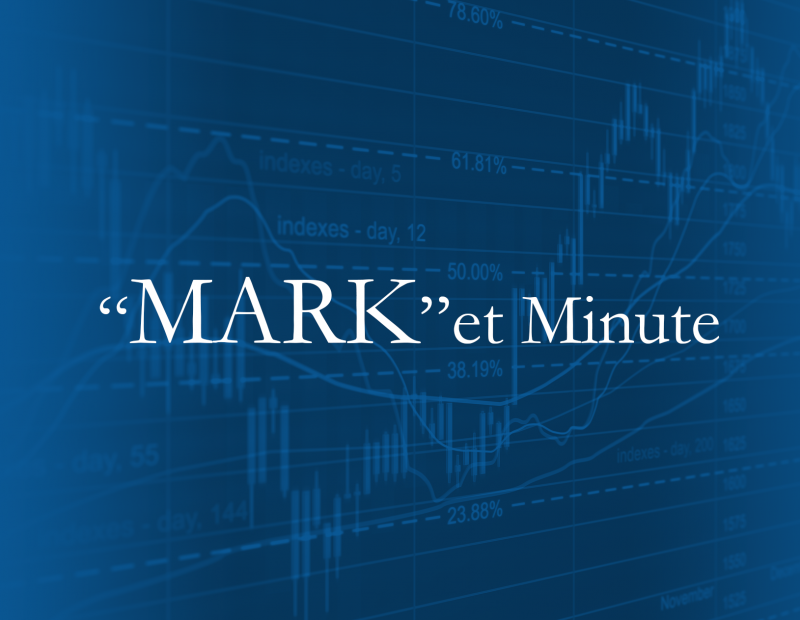Investment Commentary – January 20th, 2016
Market Indices as of Market Close January 20th, 2016
Dow 15,767 (-9.52% YTD)
S&P 1,890 (-9.03% YTD)
NASDAQ 4,471 (-10.70% YTD)
Global Dow 2,078 (2,053 52 week low /2,644 high)
10-year Treasury 2.09 (1.64 52 week low /2.50high)
Gold 1,102 ($1,045 52 week low /high $1,306)
Oil $26.76 ($26.19 52 week low /high $65.50)
Thought of the Week
Investors have had a shaky start to the year as worries about China, oil and the U.S. economy prompted a global stock market selloff. These worries are no reason to abandon equities. China’s economy is slowing, but this is nothing new. Also stock market moves in China, while volatility-producing, have little to do with underlying economic or company fundamentals, and the U.S. is relatively well insulated from a slowing China. Oil prices are falling largely due to overproduction and while low oil prices are certainly dragging on investment and energy-linked employment in the U.S., low oil prices do not have the ability to knock the U.S. into recession. Negative headlines create unease amongst investors and, as can be seen in the chart of the week, investors are now more bearish than at any time since last July. However, as is also shown in the chart, bearish sentiment is a good contra-indicator for the S&P 500, with solid equity market gains usually being logged in the year following very bearish sentiment. This should serve as a reminder to investors that the U.S. market is sentiment-driven in the short run, but determined by company and economic fundamentals in the long run.
4 Factors Driving Volatility
Slowing growth in China
The slowing growth rates in China should not come as a surprise and hinge on two basic elements:
China’s GDP has grown to $10 trillion, the second-largest economy in the world. Its economy is now like an ocean liner instead of a speed boat. The absolute size of the economy should result in lower growth rates compared to history.
The government is seeking to transform the economy to rely less on investment spending and more on internal consumption, which is also leading to slower growth. For example, the capital outlay required to build bridges and rail networks is significantly larger than stocking supermarket shelves or providing wealth management advice.
While the recent volatility in the local Chinese stock market is reflecting investor concerns that the economic weakness is larger than anticipated, coupled with the uncertainty around how authorities are managing its currency and equity markets, one should not expect that Chinese growth will entirely collapse into recession.
Falling oil prices
Slowing demand for oil is only half of the equation. The collapse in oil prices is in part due to technological advances that have led to supply growth. There have been clear responses at the company level via production and capital expenditure cuts.
Despite the lower demand for oil, Saudi Arabia announced at the end of the year that it would continue to maintain supply at current levels. This move, combined with the oncoming supply from Iran as a result of the removal of sanctions, is producing an excess of global oil supply driving prices lower.
The Saudis are one of the lowest cost oil producers in the world and have a very large capital reserve cushion which can continue to support their economy at these ultra-low oil prices. Other regions with higher cost oil such as the U.S. cannot. As such, there may be more downgrades and defaults as well as consolidations among U.S. energy-related companies.
While it is difficult to predict the future direction of oil prices, the price of oil is down 80% from its peak in 2008 and is trading at levels not seen since the beginning of the century. Like many things, the decline in oil hurts some but benefits others. For example, countries such as the United States, China, India, Taiwan and Korea are net importers of oil and should benefit from lower energy prices overall.
While oil prices are expected to remain low in the near-term, some believe that eventually they stabilize at higher levels.
Continued Moderate U.S. Economic Growth
At the beginning of the year, the ISM Manufacturing Index report came out weaker than expected and has caused many investors to question the overall strength of the U.S. economy.
Although recent data indicates some slowing during the fourth quarter, the overall economy will continue to grow at a moderate pace of 2%–3%. Housing has recovered from the economic crisis of 2008. The banks have recapitalized and are in stronger financial shape. Employment has also recovered. Unemployment stands at low 5% levels. Our proprietary economic scorecard continues to show solid but not spectacular U.S. economic growth.
Tighter U.S. monetary policies
The end of the Federal Reserve’s zero interest rate policy was finally realized in December. The Fed’s most recent guidance is to expect four rate hikes in 2016. Many question if this is still appropriate given the recent weakness in manufacturing.
While interest rates in the U.S. are likely to rise going forward, a realistic view is that the pace of growth in the U.S. economy will be more moderate. Additionally, the Fed will continue to monitor global economic and financial market developments to assess the risks to their forecasts and adjust their actions/guidance as necessary.
THIS DAY IN FINANCIAL HISTORY
January 21st, 1993: Just over a year after breaking the 600 mark, the NASDAQ Composite Index breaks the 700 barrier, finishing the day at 700.77.
The views presented are not intended to be relied on as a forecast, research or investment advice and are the opinions of the sources cited and are subject to change based on subsequent developments. They are not a recommendation, offer or solicitation to buy or sell any securities or to adopt any investment strategy.
https://www.jpmorganfunds.com/cm/Satellite?pagename=jpmfVanityWrapper&UserFriendlyURL=contentdet_module&smID=115847495506https://ipro.americancentury.com/en/insights-perspectives/research-publications/white_papers.html3


Leave A Comment